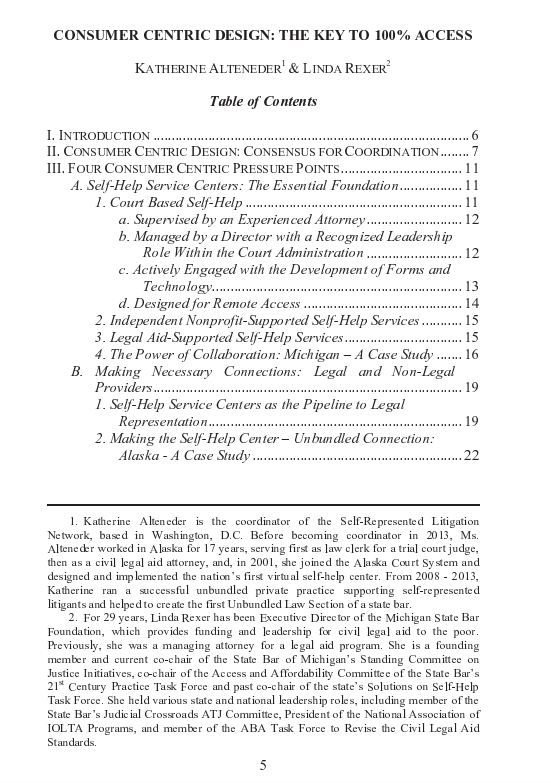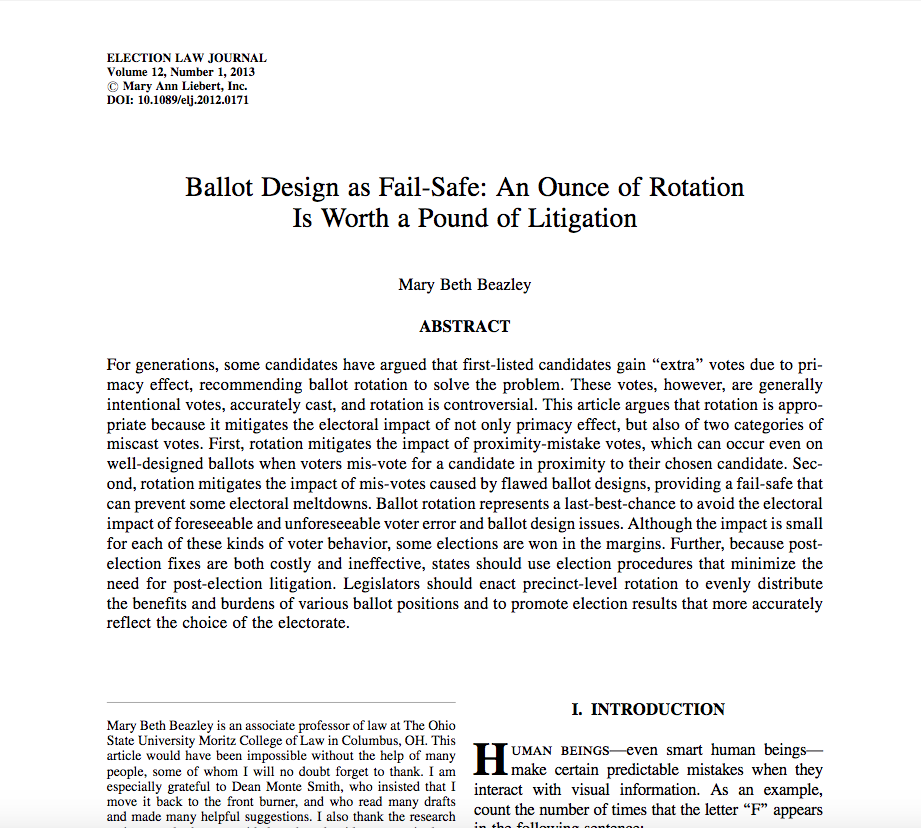This article, Consumer-Centric Design: The Key to 100% Access, provides a great introduction to how legal design can impact access to justice. It is from 2014’s The Journal of Law in Society, lays out what a court that is user-centered might look like. Katherine Alteneder, a coordinator of the Self-Represented Litigation Network co-writes with Linda Rexer, the Executive Director of the Michigan State Bar Foundation. They argue that for work on access to justice, we need to focus on innovation, technology, and consumer-centered methods — to design services that better serve litigants with
- self-help services
- better connections with legal help providers
- simplification of materials
- careful navigation of the digital divide.
- more unbundling, non-lawyer practice, dispute resolution systems, and beyond



